Teaching Meter in Music to Elementary Students
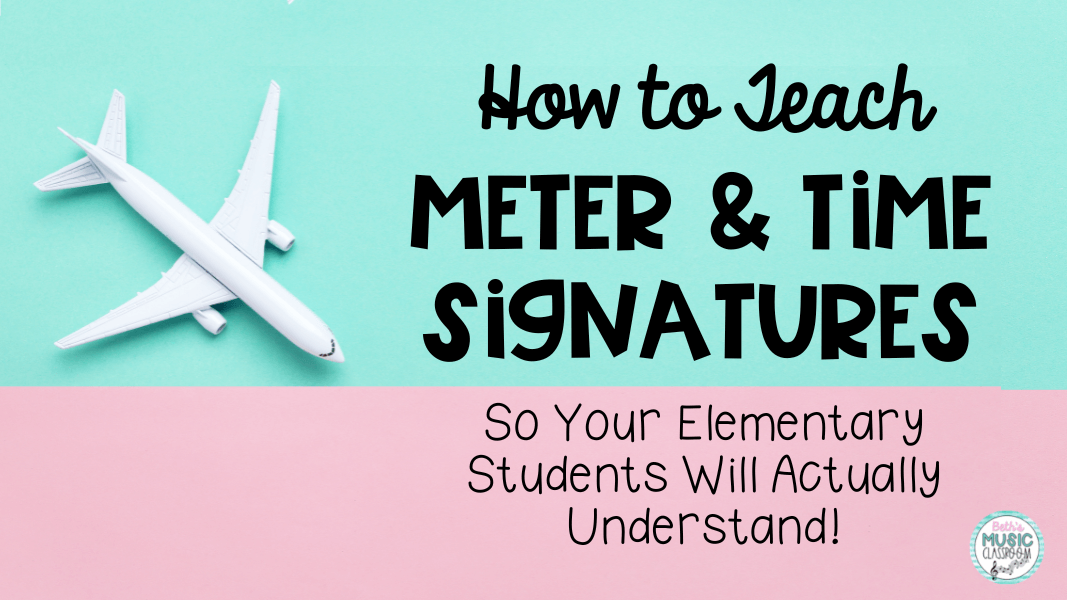
Teaching Meter in Music
This post may contain affiliate links, where I may receive a small commission if you purchase something through following the link at no cost to you.
I used to dread teaching meter in music to elementary students each year. It is such a difficult concept for them to grasp, and I know they struggled with it. Then, one year, I was desperate. I had a particular 3rd grade class just not grasping meter or time signatures at all. I knew that I would lose them soon if I didn’t do something fast. So, I quickly thought of an airplane scenario to grasp their attention. I pulled 2 chairs up to the front of the room, and I explained how meter in music is like being a passenger in an airplane.
My Flight Plan for Teaching Meter
Now before you think I’m crazy, read on to discover how I revamped my meter lesson with great success. I completely changed how I teach time signatures to my second through fourth graders, and my students’ understanding and confidence has skyrocketed ever since!
This meter lesson continues to this day in my music class. Every year, I now enjoy teaching time signatures to my students! With real-life examples, students are finally “getting it” and also loving their “light bulb moments.”
Pre-Flight for Musical Meter Lesson
First, I need to set the scene for you. Prior to my third graders coming into my music room for their lesson, I set up chairs or crates in small rows of 2, 3, and 4, similar to an airplane. Also, I wear a hat, gloves, and an airplane pin, with my red scarf and navy skirt and blazer, representing a flight attendant. A picture of the meter presentation with an airplane shows up on the board … “Come fly with MEter!” As the class enters, I direct students to a seat, as I pretend to gather tickets from the students and refer to my clipboard and seating chart.
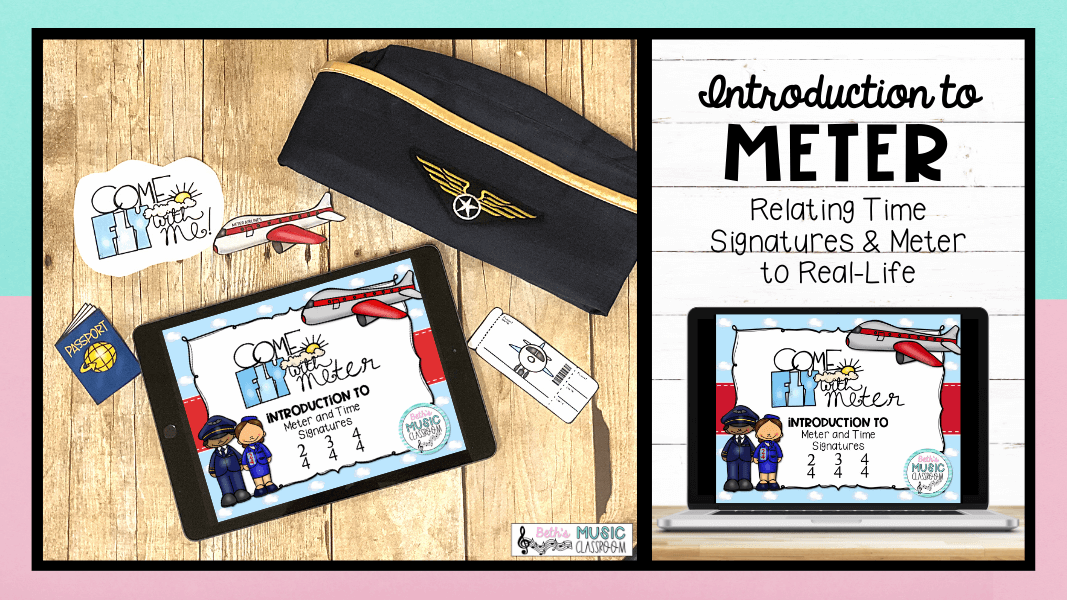
Introduction to Meter – Related to Real-life
Initial Introduction of Musical Meter Experience
Next, I play just the first 12-15 seconds of “Come Fly with Me,” Frank Sinatra version (only the first phrase). I explain that they will need to use their imaginations as they take a little trip today. At this point, I have just about the entire class curious and excited, ready for anything. The excitement can be contagious and catch those one or two students that are not quite hooked.
I begin going through my presentation on meter in music. Really, I’m just reading all about how busy the airport can be and that organization is so important. I created a whole extended family and their pretend story so that my students can follow them on their journey. I use each of the people to represent different notes. They must buy tickets according to how much space they need.
Boarding Time for Meter Lesson
As boarding time arrives, I explain all of the rules as they fly with Meter Airlines today. Of course, I use my flight voice. I find this a good time to just remind them of the class, school, and airline rules. Sometimes, with an exciting and new lesson, they may get a little carried away.
As each person boards the plane, we discuss how many seats they need and in which section they should sit. I use flight attendants to show if there are 2, 3, or 4 seats in each section.
In-Flight Meter Review Game
Now, students are ready for a short, interactive game. I use a brief game that helps them determine what person could fill the empty seats in a particular row. They must consider the flight attendant and the number of empty seats to figure it out.
By this time, my students are totally into the flight theme, and I am ready to connect the dots from finding a seat on an airplane to meter in music and from flight attendants to time signatures. The transition is so obvious and simple for my students, because the difficult concept of meter in music was just related to real-life! They get it!
Cruise Altitude for Meter in Music
Now I’m starting to ascend this lesson. I am ready to transfer the discussion from passengers to notes, and we play the same game again. So at last, I take away the flight attendants and show time signatures for the last game. At this point, my students don’t even realize that they’re identifying meter in music, because it is so seamless and the abstract has been made real to them.
Next, I play a short video from Music Express magazine as their in-flight movie. This will help tie it all in, and I just love how it talks about organizing – just like back at the airport at the beginning of the lesson.. Indeed, meter is all about organizing the beats and notes. Plus, that was the flight attendant’s job (at least in our little example in Meter Airlines).
Approach to Meter Comprehension
Finally, I am ready to help them connect the dots between airline words and time signature vocabulary. I explain 2/4, 3/4, and 4/4 time signatures with visual assessment questions to help students recognize which meter matches each example. I help them recognize what the time signature is for an example, as well as, what type of note could fit in a measure.
At this point, I often hear students say things like “well, that guy needs 2 seats,” or “the flight attendant has 4 seats empty in his section.” I will often say something like this: “Since we know the big-kid words, we should try to use them. Because next year, you’ll be in a different school and grade. People may wonder what you’re talking about if you say airplanes, flight attendants, and passengers.” They all laugh, but they get it. So, we spend some time recognizing what each element in the airplane should be called in music.
Descent and Landing of Meter Experience
At the conclusion of this 35-45 minute meter lesson, with my airplane radio voice, I thank my passengers for flying with Meter Airlines, and remind them to pick up any luggage on the way out (lunch bags, water bottles, etc).
The amount of time for this lesson works perfectly for me, and the kids get so involved in it. Teaching meter and time signatures went from being my least favorite topic to teach to the top of my list! I look forward to it every year!
Post-Flight Notes for Meter Lesson
I see my students two days in a row, so on the second day after this lesson, I love greeting them at the door with a “welcome back” or “thanks for flying with Meter Airlines again.” Then we dive into a more in-depth look at determining time signatures and looking at and listening to examples of different meters in music. But now they can handle it – they “get it.”
By the way, you can join me next time, where I share with you all about my second lesson where students practice reading time signatures/meter with lots of exciting games! My students don’t even realize they’re learning, because they are having so much fun!
I hope you are able to benefit from me sharing my “out-of-the-box” teaching process when it comes to meter in music. If you are struggling with teaching time signatures to your elementary music classes and would like to try this lesson with your students, you can find it by clicking here.
Well, I’d love to hear from you how your students do with this lesson and ideas. Or if you have any questions, you can email me at beth@bethsmusicclassroom.com, or find me on Instagram @bethsmusicclassroom.
Be sure to check out the next post on how to help students practice this newly discovered world of time signatures. Click here:
If you’re looking for some more exciting activities for your students, then click here to check out this post, all about writing a parody!
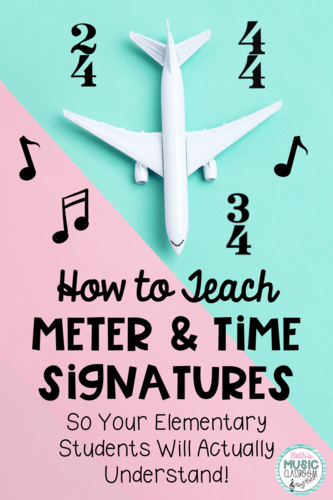
How to Teach Meter and Time Signatures

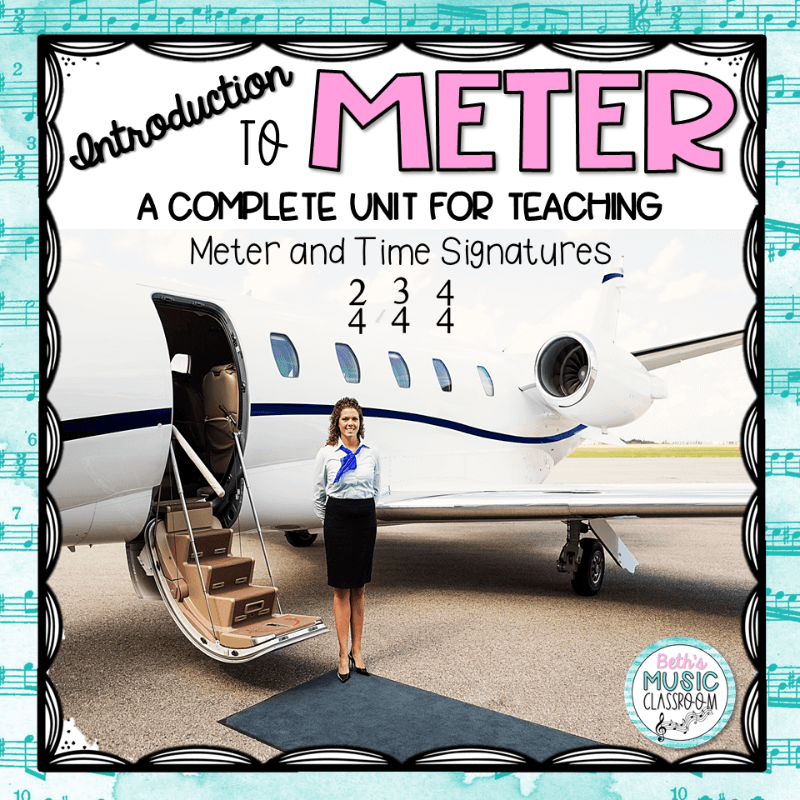
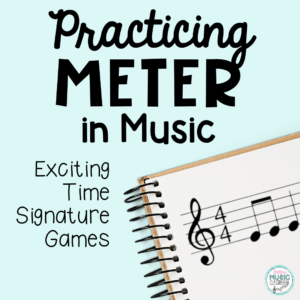

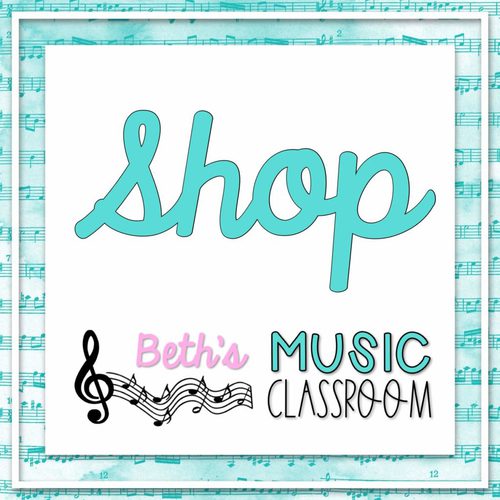
Trying to teach myself
Excellent! I hope this post is helpful. Let me know if I can do anything else for you.